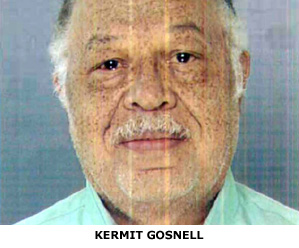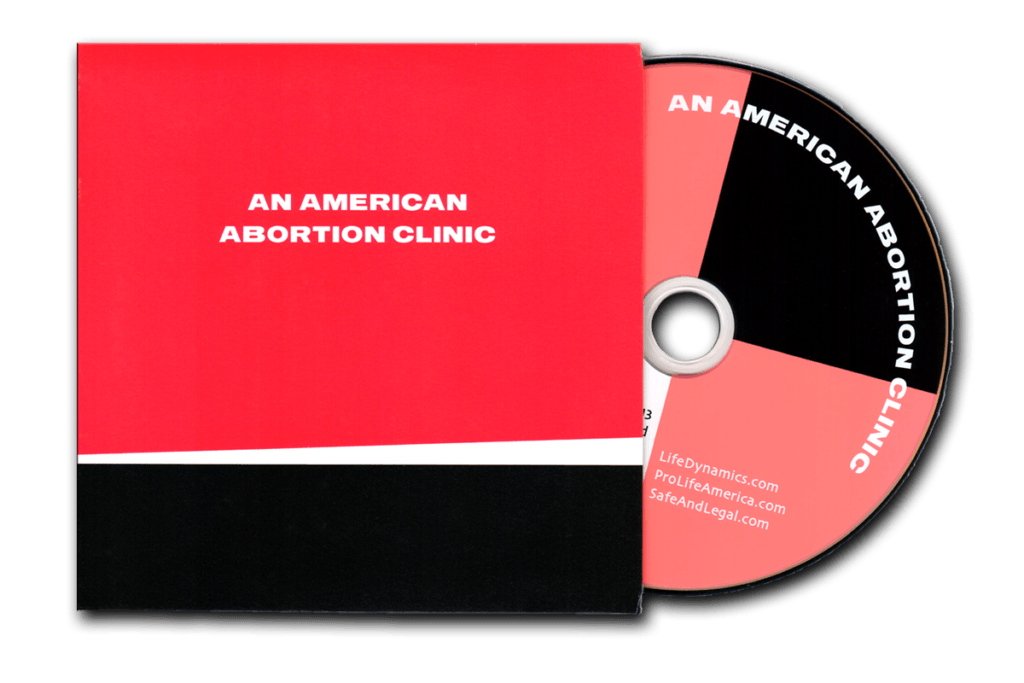Whistleblower: An employee, former employee, or member of an organization who reports misconduct to people or entities who have the power to take corrective action.
Since many sinister, and often times illegal, activities happen behind the doors of the abortion industry, there are many things that could get abortion clinics in trouble and even shut down.
Employees of abortion clinics have started to step forward to reveal things that individual abortionists have done and to expose what goes on behind the doors. A recent example of this happening was with the now notorious abortionist, Kermit Gosnell.
Meet Kermit Gosnell

Gosnell was a long-time abortionist who ran a clinic in Philadelphia called the Women’s Medical Society. He had a long history of neglect, with “ the Pennsylvania Department of Health (having) records as far back as the 1980s” about him. But Gosnell was still allowed to operate. [1] Finally, in 2010, the Philadelphia District Attorney’s office reported what they found after authorities investigated his clinic “over suspicions of illegal drug prescription activity”. What they found was beyond imaginable.
A grand jury report that was published in 2011 described the horrible conditions of the clinic, where: “he botched surgeries”, “failed to summon emergency help when it was needed”, killed babies that were born alive, and had unsanitary conditions. [2] Employees of the clinic started stepping forward to help reveal the extent of it all.
But Gosnell isn’t the only case where whistleblowers have come forward and spoken out.
The state of Texas had their own case similar to the case against Gosnell, which many people referred to as “the Houston Gosnell”.
In the Houston case, Life Dynamics was directly involved with the investigation. We even took our own camera crew to Houston to interview three employees who came forward.
This interview was just part one of our DVD, An American Abortion Clinic. In part two, the interview continues with details about how the women who come to these facilities are treated. And in part three is a mind-blowing interview with an actual patient of Douglas Karpen. This DVD will challenge everything that you have been told about so-called ‘safe and legal’ abortions.

Even though most people know about the Gosnell case, there are many other instances where whistleblowers have spoken up about abortion clinic conditions and malpractices. It has been happening for a long time.
More Whistleblowers
Abortion Worker Quits After Accusation
The Arizona Republic reported that Martha Hopkins, a former business manager for a San Antonio clinic, owned by abortion doctor Moshe Hachamovitch was reported to have told Texas investigators that “conditions were filthy and that records were in very poor order”. [3]
Hachamovitch was brought before the New York Board of Professional Misconduct and Physician Discipline, after a patient died following an abortion he performed on her, plus other charges relating to care and record keeping. The state of Pennsylvania suspended his license in 2003.
In 2004, the Arizona Medical Board revoked his license for unprofessional conduct (conduct the board determines is gross negligence, knowingly making false/fraudulent statements to the board, failing/refusing to maintain adequate records). A motion to re-hear the case was denied on April of 2004.
The paper also reported that Hopkins was pressured by Hachamovitch to do more of the high-cost, late second-trimester abortions. And that she quit after three months when he implied that she was stealing from the business.
Abortion Doctor Wanted to Avoid Licensing
Affidavits from former employees regarding abortionist Joseph Booker all include a statement that Booker falsified medical records, destroyed clinic appointment books and sign-in sheets, and accepted only cash or money orders from patients.
One employee Dona Hogan reportedly stated, “As a result of the Health Department’s first inspection, Dr. Booker instructed me not to classify the patients as abortion or gynecology when they made appointments. He stated that he was concerned that the Health Department would classify the Clinic as an abortion facility. He said that he would not report to the Health Department all the abortions actually performed so that the Clinic would not be so classified.”
In a second employee’s affidavit, Amy states, “Dr. Booker routinely reported less than 50% of the abortions performed at the clinic to the Mississippi Health Department, Office of Vital Statistics.”
Having it (aborted baby) intact was a goal, so they could do that, and have this closure. I knew what it meant to these women, to be able to hold them (the aborted baby), and be able to coo over them (the aborted baby) and say goodbye. It was profound. I got material, and sewed little tiny sheaths, and we got tiny hats we could dress them in. I would put them on a clean cloth, and I would swathe them. Many women spent hours in there (after they aborted the baby), and showed them to their other children. It was always treating the (aborted) babies (that she helped abort) with the respect the parents would want them to.” [7]
—abortion clinic nurse, Gale McMahon
(Gale was also the wife of abortionist James McMahon)
An Employee for an Abortion Clinic in Kansas Stepped Forward
As seen on the House of Horrors page of our website, reports surfaced about the horrific conditions of an abortion clinic that was operated by Kansas abortionist Krishna Rajanna. Not only did investigators speak up but one of his employees did as well.
On February 16, 2004, testimony from one of Rajanna’s clinic workers before the State’s House Federal and State Affairs Committee revealed that Rajanna advertised in the yellow pages as “Abortions Affordable,” attracting unsuspecting low-income woman.
The testimony was presented by Kansans for Life who had interviewed the employee, after she contacted a pregnancy center for advice on how to file a complaint against the abortion clinic. They said that the woman they referred to as “Ruby”, to protect her identity, had been employed for over a year at Rajanna’s office, without incident, and continued there for several more weeks.
According to the testimony, “Ruby” was distressed at the practices of Rajanna and the deplorable, filthy conditions inside his offices. She said other employees were also disgusted with the way Rajanna did business.
“Ruby” revealed the following irregular Job Practices:
“Ruby” revealed the following disturbing practices Prior To Surgical Abortions:
“Ruby” revealed the following disturbing practices During Surgical Abortions:
“Ruby” revealed the following disturbing practices After Surgical Abortions:
“Ruby” revealed the following disturbing Sterilization & Disposal Problems:
In February of 2005, the State’s Medical Board issued an emergency order after the state found the following deficiencies at Rajanna’s abortion clinic:
- Licensee had carpeting on the floor of a surgical procedure room.
- The trashcans in the clinic did not have lids.
- Sharps containers were overflowing.
- Human tissue was stored on a counter in the utility room for a time and was then stored in the freezer in a refrigerator where food was also kept.
- The clinic had an overall appearance of clutter and disarray.
- Licensee did not properly dispose of sharp objects and human tissue/medical waste.
- Licensee drew medications in syringes and kept the syringes in the refrigerator for future use. The syringes were not marked or labeled.
- Licensee maintained in the office several expired medications.
- Licensee did not properly label medications he dispensed.
- Licensee did not follow the Practice Guidelines for Sedation and Analgesia by Non-Anesthesiologists when using conscious sedation in the office.
On June 14, 2005, the final order that was issued by the board (Docket # 05-ha-58) notes that the, “evidence shows that Rajanna maintained medical waste by placing materials in a container following a procedure, but the waste container was found to not have a lid on both occasions that the Board investigator inspected the clinic. The Board finds and concludes that this conduct is not only likely to harm the public, which includes Respondent’s employees, but is also an unreasonable risk that a physician should recognize. The improper disposal of medical waste was an issue that required correction by the February 2005 order.” The board revoked Rajanna’s license.
Employee Lori Jakes told the state that, “Personally, to me, the office was never really dirty.”
Sources
- The Washington Post. “The Gosnell case: Here’s what you need to know” 4/15/2013.
- The Washington Post. “The Gosnell case: Here’s what you need to know” 4/15/2013.
- The Arizona Republic. “History of trouble at clinics, abortion centers accumulate record of 6 deaths, 28 suits” 1/17/1999.
- NBC 13. “Health department wants probation for Birmingham abortion clinic” 11/18/2006.
- National Legal Center for the Medically Dependent & Disabled.
- Transcripts from the 1999 Issues in Law & Medicine: Report of Peter R. Uhlenberg, PhD; 3-22-1999 (filed in Civil Action No. 6-94-374-W4, State of Mississippi)
- Harper’s Magazine. “Gambling with Abortion: Why both sides think they have everything to lose” 1/27/2005.
